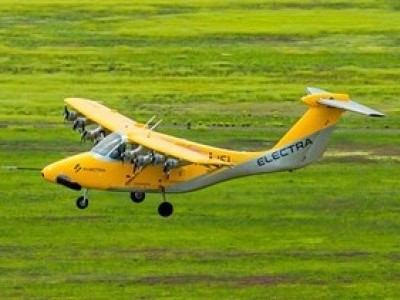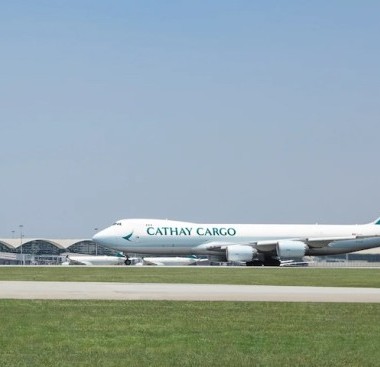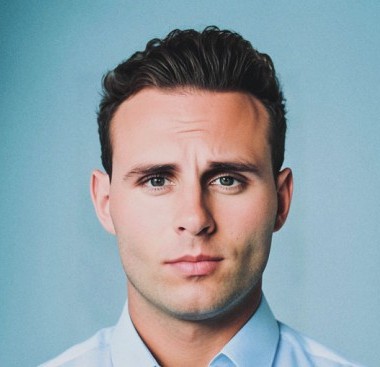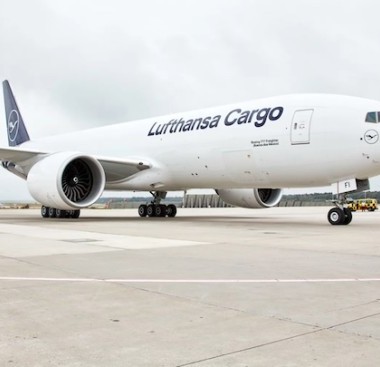Amsterdam’s airport Is on a quest to ban private jets
Schiphol Airport would like to excuse itself from the hop-on, hop-off jet-setting culture of business tycoons, celebrities and sports stars. The effort, if it succeeds over industry opposition, could set a precedent for private aviation around the world.
The Netherlands’s largest airport made its intentions known in April, when it announced plans to ban night flights and private jets starting in 2026. The declaration came five months after climate activists stormed Schiphol’s runway to protest carbon emissions from air travel, and followed years of noise complaints from locals. “I realize that our choices may have significant implications for the aviation industry, but they are necessary,” Ruud Sondag, interim chief executive officer of Royal Schiphol Group, said in a statement. “This shows we mean business.”
The fate of Schiphol’s grand plan isn’t yet clear. Its implementation hinges on compromises that haven’t been reached yet, and is further complicated by ongoing litigation. But whatever happens next at the Dutch airport, Schiphol’s example could be a harbinger of how other countries deal with the intersection of wealth, climate politics and a growing backlash against emissions seen as particularly gratuitous.
Business vs. pleasure
Moves to curb emissions and noise pollution at Schiphol began last year, when the Dutch government — the majority owner of the Royal Schiphol Group — proposed cutting the airport’s annual flights to 440,000 by 2024, from the current 500,000. The government later suggested a 460,000-flight cap as an intermediary step, but airlines challenged the restrictions in court. On April 5, 2023, a judge ruled in their favor, saying the government had not followed the correct procedure.
One day before that ruling, though, Schiphol announced a swathe of additional measures, including the 2026 ban on night flights and private jets. The airport noted that some 17,000 private jet flights crossed its runways last year, causing a disproportionate amount of noise and generating 20 times more carbon dioxide emissions per passenger than commercial flights. Around 30% to 50% of private jet flights from Schiphol are to holiday spots like Ibiza, Cannes and Innsbruck, the airport said — all destinations that are also served by commercial flights.
“This statement was really out of the blue; we didn’t expect it,” said Michael van Hooff, owner of Amsterdam-based Orange Jets, a private jet charter broker that operated 600 flights from Schiphol Airport last year.
Small aviation companies stress that private jets are an essential business tool. With a round-trip price tag of €15,000 to €25,000, depending on destination, entrepreneurs can, in Schiphol’s case, connect to a key European hub that is less than a half-hour drive from Amsterdam’s business district.
“It is mostly a business destination,” said Eymeric Segard, CEO of Geneva-based private jet charter broker LunaJets, juxtaposing Schiphol against expensive tourist locales such as Nice or Cannes. Segard said C-suite executives, board members and entrepreneurs mainly take private jets into the city to stay flexible and discreet, and to maximize work hours.
Critics of Schiphol’s plan also argue that banning private jets at one airport doesn’t make sense, as many flyers will simply choose a different one. While Schiphol is the Netherlands’s main airport for business aviation, private jets also operate out of Lelystad, Rotterdam The Hague and Eindhoven airports, among others.
Rotterdam The Hague Airport, which is also owned by Royal Schiphol Group, was quick to clarify that it has no capacity to take on flights from the Amsterdam hub. A Schiphol Group spokesperson said that the company doesn’t intend to transfer all traffic to one of its other airports, and is instead proposing greater use of commercial flights and/or other business destinations in Europe.
Toby Edwards, co-CEO of London-based private jet charter broker Victor, acknowledged a broader regional movement to opt for trains over planes where possible, but said Schiphol could also have taken a different approach. Last year, Victor partnered with oil company Neste Oyj to reduce private jet charter emissions by increasing use of sustainable aviation fuel, and Edwards said 20% of its customers choose to pay an extra €1,000 to use SAF when flying. “There is equally a cohort of flyers that would like to fly sustainably,” he said. “Right now, the best way to do that, if you have to fly, is to buy sustainable aviation fuel.”
Because private jets are smaller than commercial aircraft, and have wealthier users, they are a logical testbed for innovations like battery power and SAF, which is derived from ingredients such as waste oils, fats and sugar crops. Small-scale adoption can send a clear demand signal that helps these markets grow, and some climate groups and politicians have called for policies that would ban private jets from shorter routes unless they use green hydrogen or electricity. For now, though, few such technologies are ready for primetime: There is limited supply of SAF, for example, which also doesn’t address aviation’s impact on air quality or noise pollution.
Elite emissions
While private flights account for just 4% of global carbon emissions from aviation, it’s the unfairness that rankles. The richer half of the world is responsible for 90% of air travel emissions, according to a 2019 study, and a private jet emits up to 2 metric tons of CO2 during a single hour of flight. (A typical car emits roughly 4.6 metric tons of CO2 per year.) As one viral tweet put it, “Kylie Jenner is out here taking 3-minute flights with her private jet but I’m the one who has to use paper straws.”
Private aviation is also on the rise. The number of private jets globally more than doubled over the past two decades, according to a report published this week by the Institute for Policy Studies, a Washington, DC-based think tank. The report cited a record 5.3 million private flights last year, and a 23% increase in emissions from private jets since the start of the pandemic.
In Europe, the number of flights increased 64% last year, leading to an almost-doubling of CO2 emissions, according to a separate study conducted by Dutch environmental consultancy CE Delft and commissioned by Greenpeace. Last year, French Transport Minister Clément Beaune said the country was looking into a tax on private flights, or using other means to get companies and rich individuals to limit their use.
The egregiousness of these emissions has also made private jets a ripe target for activists focused on climate justice, which asks how responsibility for the climate crisis can be equitably shared, said Heather Alberro, a lecturer in global sustainable development at Nottingham Trent University.
“The super-rich have a disproportionately colossal ecological climate footprint, and I think because evidence is accumulating around this in recent years, that’s one of the reasons that activists have started to target these kinds of high emitters and these lifestyles of excess,” Alberro said. Protests also tend to enjoy the highest levels of popular support when the public sees them as targeted at elites, she said.
At Schiphol Airport in November, more than 200 people were arrested after demonstrators from Greenpeace and Extinction Rebellion stormed the tarmac and blocked aircraft. “The wealthy elite are using more private jets than ever, which is the most polluting way to fly,” Greenpeace Netherlands campaigner Dewi Zloch said at the time. “We want fewer flights, more trains and a ban on unnecessary short-haul flights and private jets.”
The protest clearly played a role in Schiphol’s current plan, says Greenpeace climate and energy campaigner Maarten de Zeeuw, though he also acknowledged that local frustration has been building for some time. “Maybe the airlines don’t see it yet, but in the end it’s inevitable that there are measures that reduce noice and pollution,” De Zeeuw said.
Matthew Paterson, director of the Sustainable Consumption Institute at the University of Manchester, said climate campaigners are effectively reframing the problem of aviation as a problem of inequality. “It’s not about the people who are going every two years to Marbella,” he said. “It’s about the people who are flying once or twice a week.”
Monitoring these frequent flyers has even become something of an internet pastime. Menno Swart, co-host of aviation podcast The Mic High Club, started tracking the private jets of wealthy Dutch celebrities after he saw a Twitter account garner attention for following the private jet of Tesla (and Twitter) CEO Elon Musk. Swart’s most popular account, @VerstappenJet, shares the whereabouts of a jet owned by Formula 1 racer Max Verstappen, who sometimes takes off from Schiphol.
Swart called Schiphol’s plan to ban private jets a political statement. “It’s now popular opinion to bash private planes, and they sort of jumped on the bandwagon to do it,” he said.
‘Easy prey’
The future of Schiphol’s plan remains uncertain. The airport says its goal of banning private jets and ending night flights is unaffected by the court ruling on flight capacity, but is otherwise circumspect about what comes next — except to say that most of its proposed measures require more consultation with stakeholders.
Those stakeholders present formidable opposition. Air France-KLM, Delta Air Lines Inc., and EasyJet Plc were among the airlines to sue the Dutch government over the flight cap, and Transavia Airlines BV, which accounts for the majority of night slots at Schiphol, warned that nixing night flights would make remaining flights too pricey for the working class. “The flights we can still operate will become much more expensive,” CEO Marcel de Nooijer said.
More than anything, Schiphol shows that there are few simple fixes for decarbonizing air travel. Demand isn’t going anywhere, but solutions are still in beta. “Jet-setting” has been synonymous with a glamorous lifestyle, but is increasingly understood to mean over-emitting. And while only a privileged few can fly private, even eliminating that option entirely barely scratches the surface.
Banning private jets would be a drop in the ocean when it comes to lowering CO2 levels, said Roman Kok, senior communication manager at the European Business Aviation Association, an industry group. But for Schiphol, he said, trying to is “easy prey.”
Similar Stories

Stonemont announces industrial development close to Tampa International Airport
View Article
Maersk boosts Weatherell to Global Chief of Air Freight Forwarding
View Article
Logicsols chooses BlueBox Systems due to excellent air freight data
View Article
FIATA and IATA united for resilience
View Article
U.S. Navy selects Electra to design ship-based eSTOL logistics aircraft
View Article
Routes Europe officially handed over to 2025 hosts
View ArticleGet the most up-to-date trending news!
SubscribeIndustry updates and weekly newsletter direct to your inbox!





